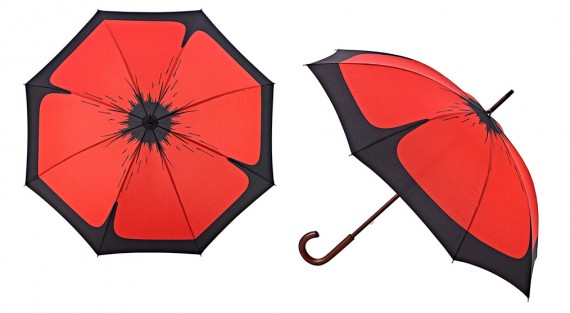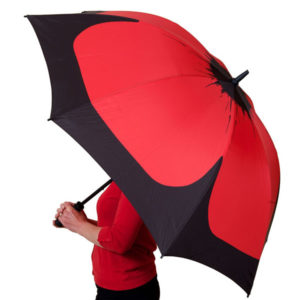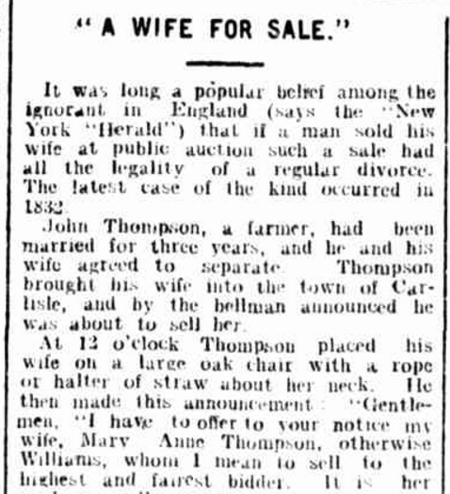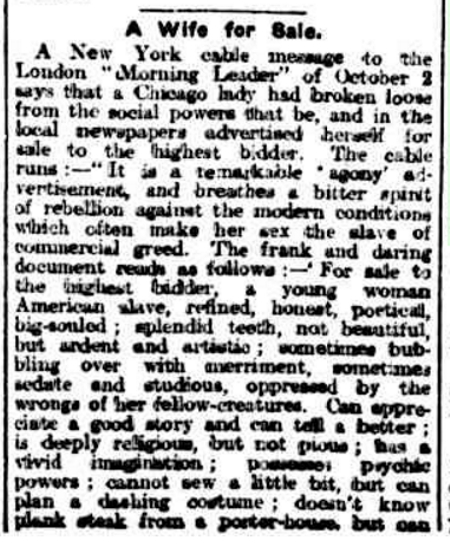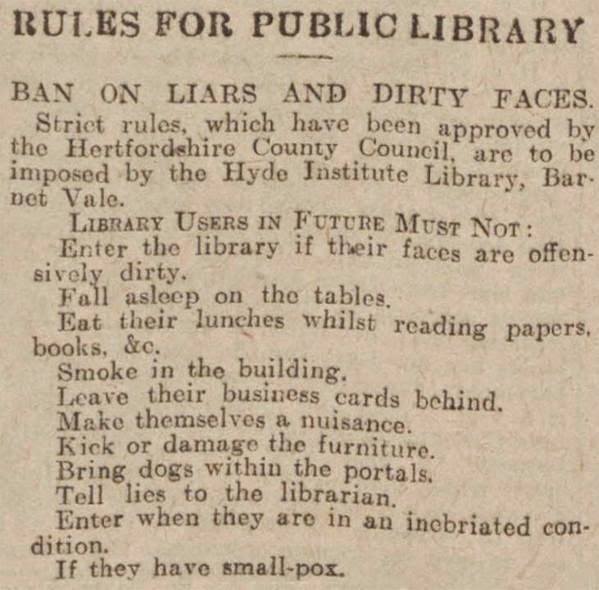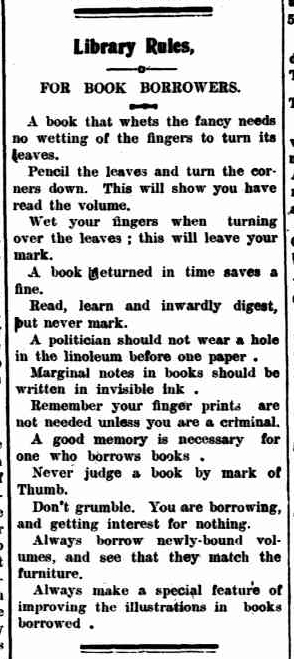The Poppy Umbrella
If you’re in need of a new umbrella, or even if you aren’t, but like to put your money to a good cause … buy a Poppy umbrella.
I first saw these poppy umbrellas at the Families and Friends of the First AIF stand at Congress in Sydney in 2018, and bought one there, and since then I’ve bought a few more and given them as gifts.
The poppy of course is a symbol of remembrance of the First World War, that is strongly linked with Armistice Day (11 November), but the poppy’s origin as a popular symbol of remembrance lies in the battlefields of the First World War, where poppies were a common sight, especially on the Western Front.
These umbrellas not only look fabulous with a giant red poppy graphic, but as mentioned before, the funds go to a good cause …
Here’s a few paragraphs from the FFFAIF website which gives information about the umbrella, and what the funds go to …
The Poppy Umbrella, resembling a Flanders poppy when open, is manufactured for Rembrella by Fultons, the largest supplier of quality umbrellas in the UK. They are only available for sale through registered charities of ex-Service and welfare organisations, or military and heritage museums, or educational associations and not-for-profit organisations, and in 2009 Rembrella appointed Families and Friends of the First AIF (FFAIF) as its Australian importer.
Sales of the umbrellas enables FFFAIF to contribute funding to Commemorations in Sydney for Fromelles Day and the Battles of 3rd Ypres as well towards the costs of headstones on unmarked graves of returned Diggers.
The Poppy umbrellas are available in three different styles: Telescopic (small and compact), Standard (tall with a wooden curved handle) and Golf Umbrella (large).
The FFFAIF don’t have online ordering on their website, but if you contact them and they can send you an order form, or you can simply call and place an order over the phone. Below are the specifications of each style. Prices are in Australian dollars.
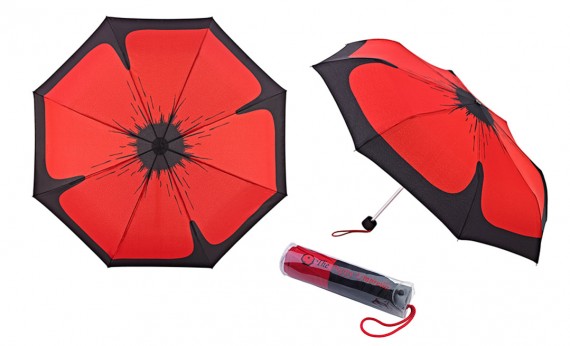 Telescopic Poppy Umbrella
Telescopic Poppy Umbrella
A handy folding umbrella, light and easy tp cally for everyday use.
– 53cm fib length
– 3 stage manual telescopic
– 24cm long when closed
– has a carry strap and clear PVC protective sleeve
$45.00 + p&h ($9 postage for 1-2, $15 postage for 3-4)
Standard Poppy Umbrella
This traditional style wooden ‘crooked’ handle umbrella will add a vivid splash of colour on a wet (or sunny) day.
– 59cm rib length, 90cm shaft length
– wooden shaft and wooden crooked handle
– cover diameter 102cm
– includes a black protective sleeve
$50.00 + p/h (contact FFFAIF for postage cost)
Golf Style Poppy Umbrella
A large, lightweight umprella, ideal for outdoor activities like golfing or walking.
– 77cm rib length, 98cm shaft length
– cover diameter 134cm
– lightweight fibreglass frame
– black ‘pistol grip’ handle
$55.00 + p/h (contact FFFAIF for postage cost)
—————————-
Disclosure: Just to be clear, I have no affiliation with FFFAIF other than being a paying customer who loves their umbrellas. I simply wanted to write about them so others know where they can get their own good quality, great looking, and supports a good cause umbrella.
If you’d like to keep up with the latest news from the Friends and Families of the First AIF, follow their Facebook page. Or if you’re like to get in touch, their contact details are:
Email: enquiries@fffaif.org.au
Phone: (02) 6882 6270
Address: PO Box 4245, Forster, NSW 2428 Australia
Discovering Links: 17 FREE Links for Queensland Genealogy Research
Here’s another post in my “Discovering Links” series. These consist of a collection of links that I have discovered, or found useful, and simply want to share with others. But rather than just giving you a whole batch of random links each time, I am grouping them by Australian state, country, county, or topic. You can see my previous Discovering Links posts here.
So Queensland is the topic for this one. It’s not intended to be an exhaustive collection of links, but simply ones that many will find useful, and it may include some that you may not have known about.
And while many people think that genealogy costs a lot of money, let me tell you that all of the links below are free. Personally I find that it’s often a matter of knowing where to look beyond the big-name websites, and hopefully this will help with that.
=== QUEENSLAND ===
Renamed Places in Queensland
While I’ve seen ‘renamed towns’ lists for other places, I’ve never seen one as extensive as this Queensland one. Going way beyond just listing towns and suburbs that have been renamed, this one even includes street, cemeteries and buildings. Grouped into: Shires & Local Government; Electorates; Towns, suburbs & localities; Post offices; Railway Stations; Schools; Streets; Churches; Cemeteries;
Buildings: Houses, Hotels, Theatres, Properties & Other Man-Made Things; Geographical Features: Mountains, Rivers etc.; Shire & Local and more!
Queensland Family Trees
This website contains names of over 42,000 individuals, and over 2000 photos and other media, which are linked to the relevant individuals that have a connection to Queensland. Easy to use it has a simple search box on the home page.
Queensland Residents Pre-1859
Griffith University is documenting the lives and experiences of “people, groups and organisations that have not been the subject of historical investigation” by collating information relating to the early colonial period. Use the simply A-Z list, or enter a surname, and you’ll find those that have all ready been documented. Alternatively you’re also welcome to submit your own ancestral biographies
Queensland Timeline pre-1600s to 1859
What happened when in Queensland? This comprehensive timeline will tell you.
Queensland War Memorials Register
War memorials remain as places for honouring the fallen and those who have served our nation. They remind us that in the despair of war, the ANZACs showed courage, ingenuity, good natured irreverent humour and a commitment to their mates. The Queensland War Memorial Register records the sites that are sacred to the memory of those that served. It is designed to provide information for historians and to assist present and future generations understand how the dedication and courage of Australia’s youth created a spirit and national identity for our country. At the time of writing this the site lists 1399 war memorials.
Brisbane Images 1850s to Present
The Brisbane City Archives holds an amazing digital collection of images, maps, plans and documents that document Brisbane’s History from the 1850s through to now. Find your house, find your street or see the tram routes of Brisbane in the 1940s. You can search and view these collections here. Simply enter your search term above or click on an image below to start exploring Brisbane – past and present.
Brisbane City Council Cemeteries
The Brisbane City Council manages 12 cemeteries and three crematoriums: Bald Hills Cemetery; Balmoral Cemetery; Brookfield Cemetery; Cedar Creek Cemetery; Hemmant Cemetery; Hemmant Crematorium; Lutwyche Cemetery; Moggil Cemetery; Mount Gravatt Cemetery; Mount Gravatt Crematorium; Nundah Cemetery; Pinnaroo Crematorium; Pinnaroo Lawn Cemetery; South Brisbane Cemetery; and Toowong Cemetery. Unfortunately, not all records are complete because the Brisbane Council only gained full control of Brisbane’s public cemeteries in July 1930. Before that time, a number of trusts established under Queensland law managed these cemeteries.
Queensland Births, Deaths and Marriages
Search the Queensland historical births, deaths and marriages indexes for free. Covering births between 1829 and 1919, marriages between 1829 and 1944, and deaths between 1829 and 1989, to obtain a copy of the certificate there is a fee, and you can choose to have it as a digital image and emailed to you or a paper copy posted out to you.
Maryborough Public Records 1847-1989
This collecion of miscellaneous records for Maryborough, Queensland, includes burial registers, a hospital death register, list of residents, and a list of war memorials and honor rolls giving soldiers’ names. Original records are located in Maryborough City Hall, Queensland, Australia. The collection contains over 17,000 entries, on 1844 original images.
Convict Transportation Registers Database 1787-1867
The State Library of Queensland have compiled a listing on over 123,000 convicts that arrived on the following ships: Asia, Surrey, Mangles, Norfolk, Elizabeth, Layton, Lord Lyndoch, Marquis of Huntley, Guildford, Prince Regent, Georgiana, Blenheim, Adelaide, Strathfieldsaye, St Vincent, Argyle, Circassian, and Stately.
Queensland Cemetery Inscriptions 1802-1990
An index of over 1.1 million entries which combines several indexes, cemetery transcriptions, burial and other records from cemeteries in mostly in Queensland. Although there a few entries that relate to New South Wales, Norfolk Island, Tasmania, and Western Australia.
Queensland Soldier WWI Portaits
The State Library of Queensland has digitised almost 30,000 soldier portraits that appeared in ‘The Queenslander’ periodical from 1914 through to 1917.
Queensland Mining Accidents 1882-1945
Queensland mining accidents were listed annually in the Queensland Legislative Assembly Votes & Proceedings. This index contains 8904 entries of mining deaths in Queensland that were mentioned. The accidents occured in the following regions: Ipwsich region, Charters Towers, Mount Morgan region, Gympie region, Mount Isa region, Chillagoe region, Bowen, Rockhampton region, Maryborough, Darling Downs, Cloncurry region, Mount Coolan, Clermont region, Cracow, Brisbane region, Irvinebank, Townsville region.
Text Queensland
This website is a one everyone researching Queensland history should bookmark. All free, it contains books, journals, theses and newspapers as well as government sources including the Queensland Government Gazette 1859-1900, as well as Pugh’s Almanacs, The Queenslander (newspaper) 1866-1939, Journal of the Royal Historical Society of Queensland 1914-1994 and much more. and more … all searchable.
The Queenslander (newspaper) 1866-1939, as well as the Journal of the Royal Historical Society of Queensland 1914-1994 and much more.
Queensland School, Hospital and Orphanage Records
The Queensland State Archives has an enormous collection of records from the nineteenth and early to mid-twentieth century on Queensland government schools, hospitals, asylums, medical staff, orphanages and children’s homes to name a few. The link above takes you to a listing of what they have available.
Queensland Genealogy and Archives Research Tips
Well-known genealogy researcher, Judy Webster knows everything there is to know about Queensland genealogy research, and her site is an enormouse collection of information for those with Queensland connections. She has a Tips section for those researching Queensland genealogy, which is totally worth a read.
Queensland Genealogy Facebook Group
Got a query to do with Queensland genealogy research? Are you on Facebook? If yes, why not join the Queensland Genealogy Facebook Group, and pop your question there. There’s several thousand member, and members are happy to help each other out.
———————————-
Happy researching 🙂
A Wife for Sale
Now there’s a title that I bet got your attention. I know it got mine when I was browsing through the old newspapers on Trove and saw the headline “A WIFE FOR SALE”.
On further searching, I found that there are actually quite a heap of articles titled “A Wife for Sale”. But today I’m going to share two with you.
In our modern day, western world society, the whole concept of “selling a wife” is horrifying, but these two articles might just give you a different view of it …
They both come from Queensland newspapers, but are reporting news from overseas.
ARTICLE 1 comes from the Brisbane Telegraph, Wednesday 31 July 1912, page 4 (click for a link to the original article) and is a mutally agreed sale between the husband and wife.
“A WIFE FOR SALE.”
It was long a popular belief among the ignorant in England (says the “New York “Herald”) that if a man sold his wife at public auction such a sale had all the legality of a regular divorce. The latest case of the kind occurred in 1832.
John Thompson, a farmer, had been married for three years, and he and his wife agreed to separate. Thompson brought his wife into the town of Carlisle, and by the bellman announced he was about to sell her. At 12 o’clock Thompson placed his wife on a large oak chair with a rope or halter of straw about her neck. He then made (his announcement “Gentlemen, “I have to offer to your notice my wife, Mary Anne Thompson, otherwise Williams, whom I mean to sell to the highest and fairest bidder. It is her wish as well as mine to part for ever. She has been to me only a born serpent I took her for my comfort, the good of my home, but she became my tormentor, a domestic curse, a night invasion, and a daily devil. I speak truth from my heart when I say— May God deliver us from troublesome wives and frolicksome women! Avoid them as you would a mad dog, a roaring lion, a loaded pistol, cholera morbus, Mount Etna, or any other pestilential thing in nature.
WOMANLY QUALITIES. Now I have shown you the dark side of my wife, and told of her faults and failings, I will introduce the bright and sunny side of her, and explain her qualifications and goodness. She can read novels and milk cows, she can laugh and weep with the same ease that you could take a glass of ale when thirsty. Indeed, gentlemen, she reminds me of what the poet says of women in general — Heaven gave to women the peculiar grace, To laugh, to weep, to cheat the human — race. “She can make butter and scold the maid; she can sing Moor’s melodies and plait her folds and caps; she cannot make rum, gin, or whisky, but she is a good judge of the quality of each from long experience in tasting them. I therefore offer her, with all her perfections and imperfections, for the sum of fifty shillings.”
The woman was finally sold to one Henry Mears for the sum of twenty shillings and a Newfoundland dog. Man and wife parted in perfect good temper, Mears and the woman going one way, Thompson and the dog another.
So all ended happy, in an odd way. And that would certainly make for an interesting tid-bit on someone’s family tree.
————————
ARTICLE 2 was recorded in the Brisbane Courier, Tuesday 20 November 1906, page 4 (click for a link to the original article). This is an interesting one with a lady offering herself up for sale.
A Wife for Sale.
A New York cable message to the London “Morning Leader” of October 2 says that a Chicago lady had broken loose from the social powers that be, and in the local newspapers advertised herself for sale to the highest bidder. The cable runs:- “It is a remarkable “agony” advertisement, and breathes a bitter spirit of rebellion against the modern conditions which often make her sex the slave of commercial greed. The frank and daring document reads as follows:- ‘For sale to the highest bidder, a young woman American slave, refined, honest, poetical, big-souled; splendid teeth, not beautiful, but ardent and artistic; sometime bubbling over witih merriment, sometimes sedate and studious, oppressed by the wrongs of her fellow-creatures. Can appreciate a good story and can tell a better; is deeply religious, but not pious; has a vivid imagination; possesses psychic powers; cannot sew a little bit, but can plan a dashing costume; doesn’t know plank steak from a porter-house, but can
get up a swell dinner; can’t make a loaf of bread, but can give character impersona-tions that can’t be beat; doesn’t go to church, but obeys every divine law. She’s a lovely typewriter, but typewriting is hell; has Axminster tastes, but ragcarpet opportunities. With versatile talents she longs for silk cîatihing, and buys cotton, while shallow-pated women laden with diamonds air themselves and lap-dogs in 5000 dollar automobiles; her brain is burn-ing with projects to benefit mankind, but her body is bound with galling iron chains, to the rack of mechanical toil. Instead of offering herself for sale privately she prefers a public auction; is not very old, but wasn’t born yesterday.’ Arrayed in a baby blue tea gown and diamond brooch, she received the Chicago journalists. ‘I’m offering my intellect and genius,’ she explained. ‘I don’t suppose I shall be respected by the conventional world, but I am through with drudgery and toil. The man who buys me will get a poor cook, but a good entertainer.'”
I would love to know what happened to her. Did she find a good husband and a happy home? Either way you have to admire her guts for wanting to change her life, and get out of slavery, not to mention her honesty in the description!
Just out of interest I did find numerous articles for “Husband for Sale” too, but I’ll save that for another time.
No Liars, No Dirty Faces, and Other Library Rules
Library rules were simple back in the day. If you take look at current library rules, they’re kind of what you’d expect. Very long and very detailed. Not that there’s anything wrong with that, they’re just covering their bases.
But back the 1900s (actual date unknown), the Hyde Institute Library in Hertfordshire, England, created a list of just 12 simple rule … and very wise ones at that!
What we do know, is that the first newspaper account of this list that I found was is in The Observer, London, England, Sunday 27 April 1930, p18.
But it was so good, that it was picked up by the Australian newspapers, and reproduced in the Northern Territory Times, 12 August 1930, p6, as well as Brisbane’s Sunday Mail, 11 January 1931, p15 as well as Melbourne’s Advocate, Tuesday 23 March 1939, p16 to mention a few.
Incidentally while looking on Trove for “Library Rules”, I found a great article that was printed in the Geraldton Guardian, Tuesday, 4 November 1914, p4, which I’ve added in below.
I especially like the “Don’t grumble. You are borrowing, and getting interest for nothing”. So true. Libraries are free, and they provide an incredible service to the community. Respect the staff and library volunteers, not to mention the books and other items the library has and allows the public to use.

